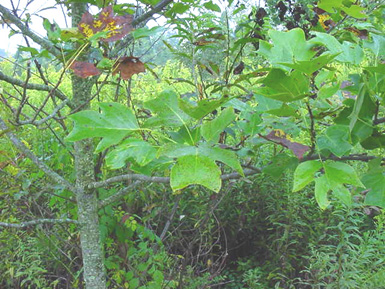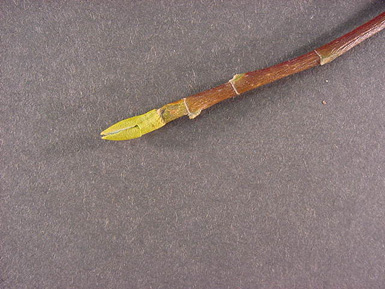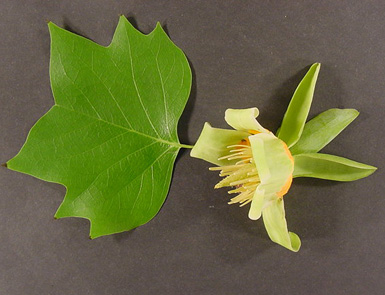Form: Very straight, few limbs, heights of 120 ft. and a dbh of 18 - 24 in.
Leaves:
Arrangement: alternate; simple
Shape: 4 lobed, orbicular
Margin: entire
Texture: glabrous
Venation: palmate

Bark: on young trees dark greenish or orange-brown and smooth, with small white spots; soon ashy gray, breaking up into long, rough, interlacing rounded ridges separated by fissures; inner bark bitter and aromatic.
Twigs and buds: Twigs are moderately stout, reddish brown, bitter to the taste. Buds are long and flattened and have valvate scales on the the bud which give it a "duck bill" appearance. Stipule scars encircle the twig.

Flowers and fruit: The flower has and orange corolla with yellow-green petals. The fruit is similar to an okra pod, breaking up into samaras.

Distinguishing characteristics: One of the tallest and straightest trees in the forest. It is easily identified in the early spring by its light green pyramid shaped crown. Remains of seed pods on the limbs make it identifiable in the winter.
Range: Central New York west to southern Michigan south Louisiana and east to Florida.
Silvics: It is intolerant of shade and grows in coves and on moist slopes with deep rich soils.
Ecological and cultural importance: Traditionally used for log houses; used by bears for dens